- Home
- slideshows
- miscellaneous
- Step aboard the USS Jason Dunham, one of the versatile destroyers the Navy uses to do everything from nabbing pirates to tracking Russian warships
Step aboard the USS Jason Dunham, one of the versatile destroyers the Navy uses to do everything from nabbing pirates to tracking Russian warships
The Dunham is a Flight IIA Arleigh Burke-class destroyer named after late Cpl. Jason L. Dunham, a 22-year-old Marine awarded the Medal of Honor for his actions in a 2004 attack in Iraq.

Fifty-ninth in its class, the ship was christened by Dunham's mother and launched in August 2009 and commissioned in November 2010. It's 510 feet long and at full displacement weighs just over 9,500 long tons.
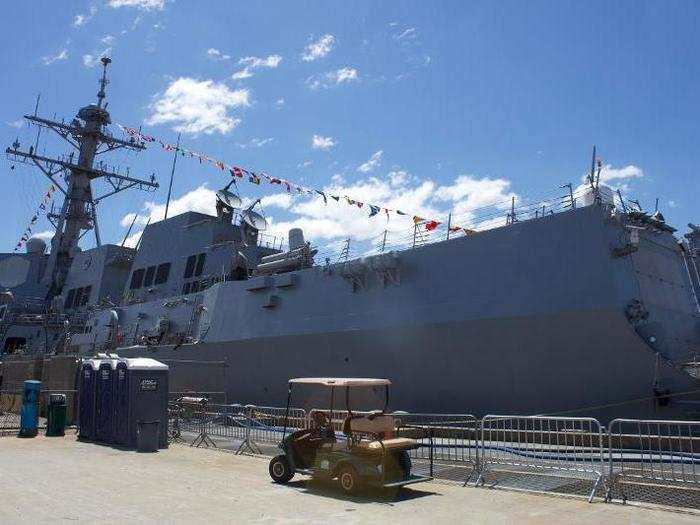
Fleet Week visitors boarding the Dunham first stepped onto the flight deck, which is crossed by a track used to move the ship's helicopter in and out of its hangar, seen open below.
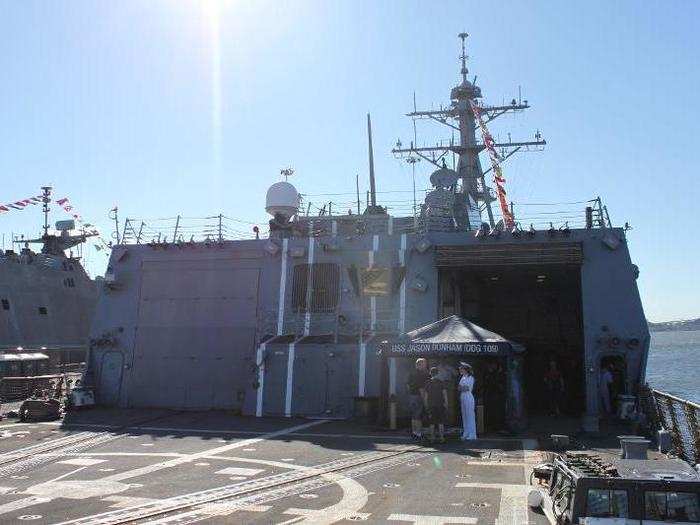
The Dunham's helicopter is central to the destroyer's anti-submarine warfare mission, deployed to look for and investigate undersea contacts. Crew members stationed above the deck oversee flight operations.
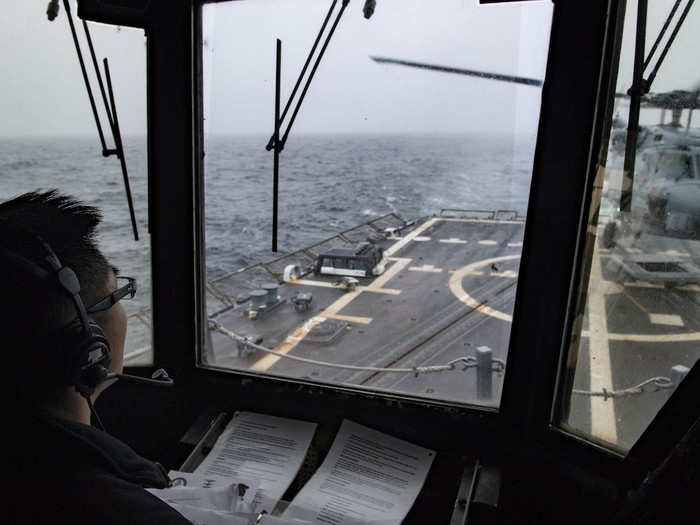
As do crew members stationed at deck level, like the one below.
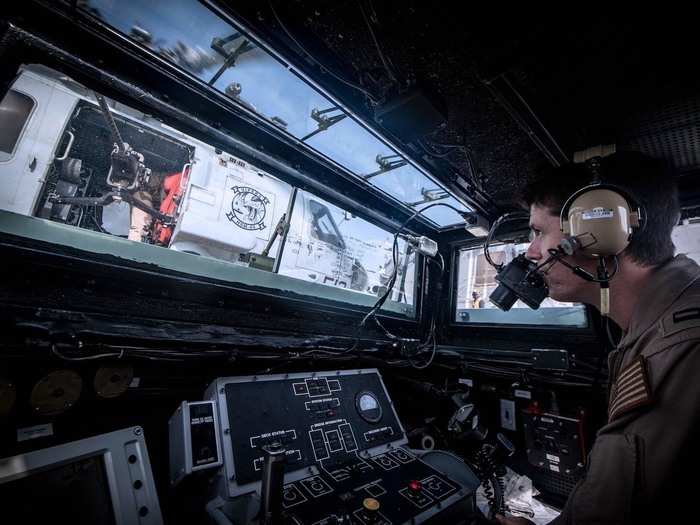
The ship has "a very diverse crew and capability," Ellis said. Sonar technicians detect and defend against subsea threats. Air specialists oversee the ship's radar capabilities and provide anti-air defense, and surface warfare crew, like gunners mates and fire controlmen, are trained to fight surface ships. "So it's all about training," Ellis added.
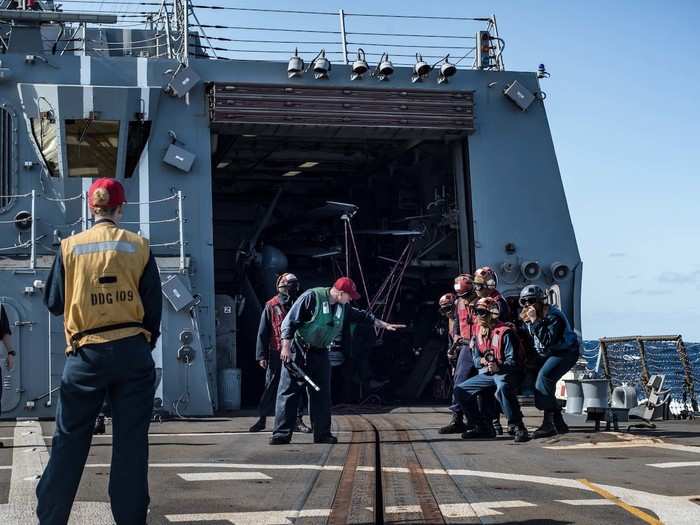
Visitors entered the Dunham through one of the hangar bays. On the deck can be seen one of the platforms on which the ship's helicopters are moved.
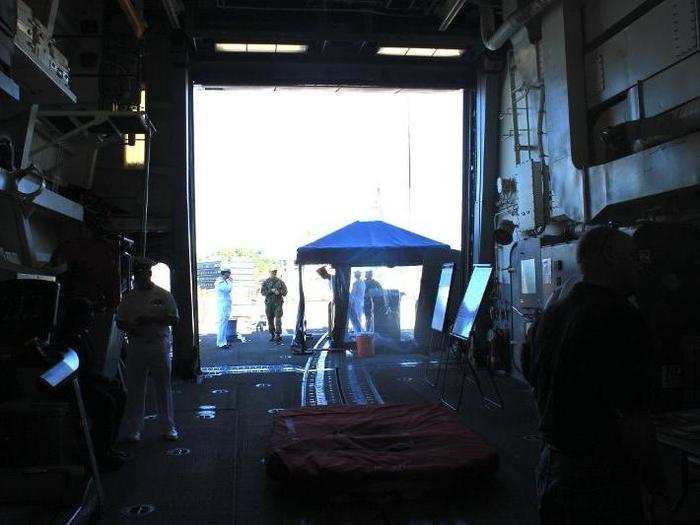
The entrance just beyond the hangar included a decontamination chamber, used if personnel entering the ship have been exposed to chemical agents or other harmful substances.
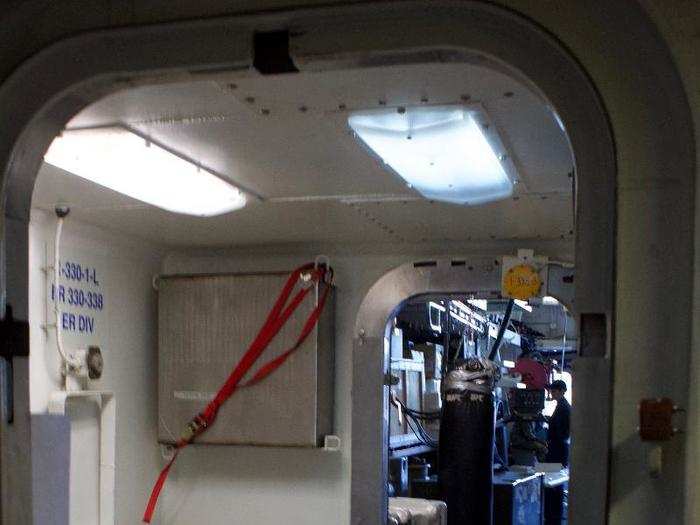
Life aboard the Dunham is "very busy," Ellis said. "The days kind of fly by with how busy we stay. Sometimes I'll work like 18-hour days, and the days just kind of blend together, because when you wake up for watch" it can be the morning or the middle of the night.
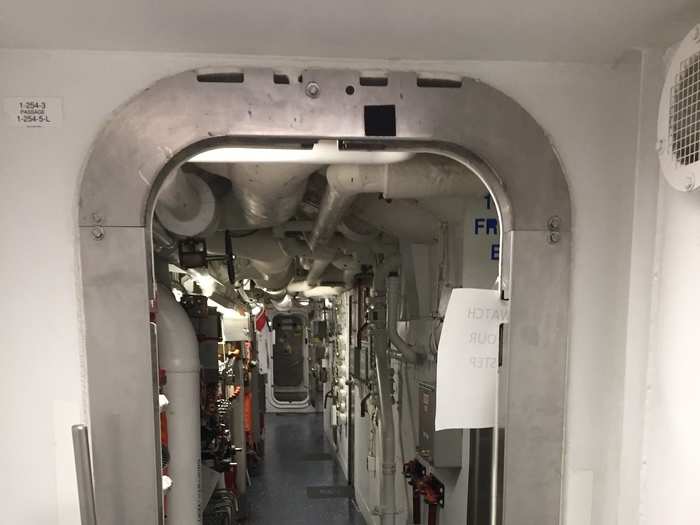
When there is down time, the ship has morale, wellness, and recreation events, Ellis said. "Friday nights and Saturday night we'll do special events for the crew, and we'll have board-game nights or karaoke nights or video-game battles. We'll have like Super Smash Bros. battles and things like that to keep up morale."
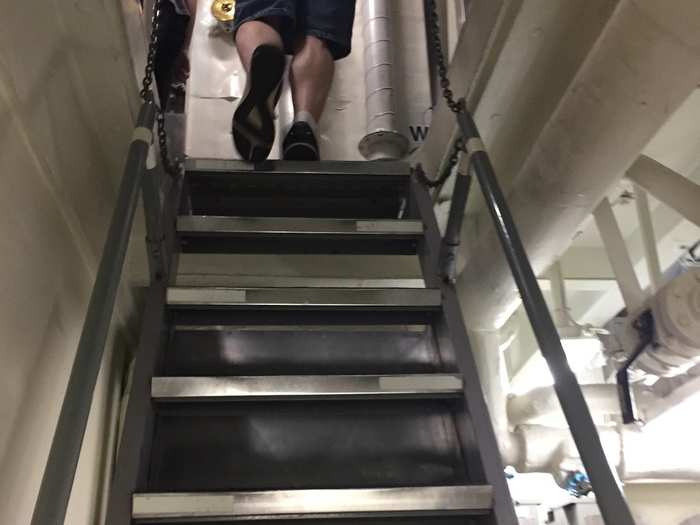
"I think what's beautiful about this ship is that it is very tight-knit crew. It's very much a family," Ellis said in an interview in the ship's wardroom, seen below. "So we emphasize taking care of one another and maintaining good relationships, because we're constantly out at sea ... We spend more time [together] than we do with our actual families a lot of the time."
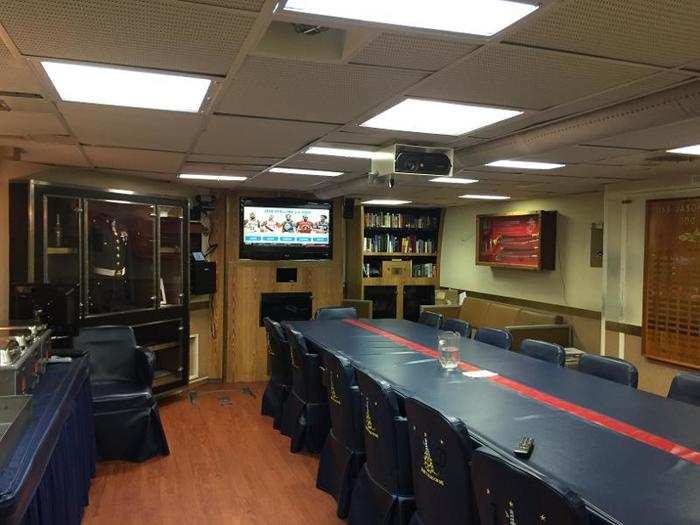
The back wall of the wardroom had rows of labeled mugs, one of them in honor of the ship's namesake, Marine Cpl. Jason Dunham.
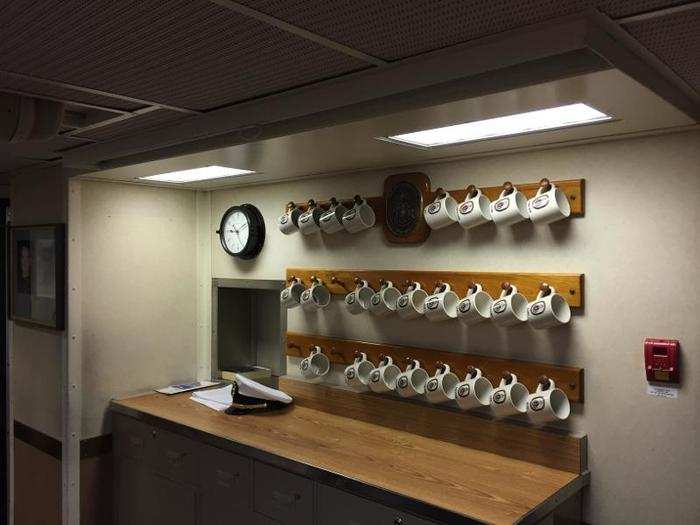
The Fleet Week tour took visitors out onto the forecastle — or fo'c'sle, or fo'c's'le, depending on your level of formality.
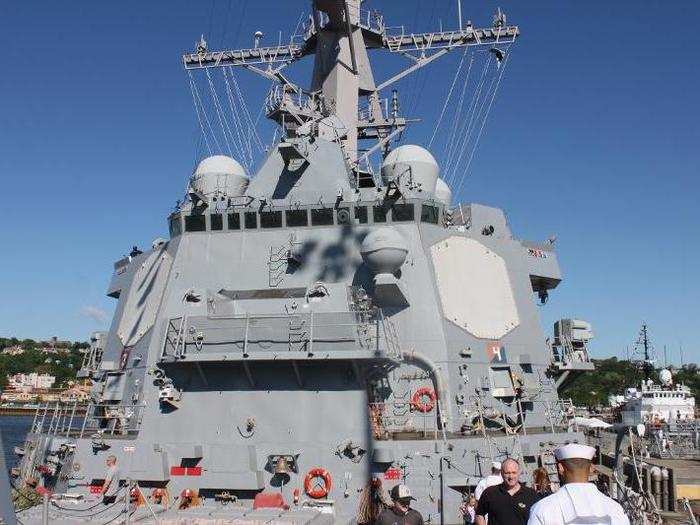
Whatever you call it, the forecastle's dominant feature was the 5-inch gun, which sat right in front of one of the a vertical launch systems, in the lower left corner here, out of which missiles like the Tomahawk can be fired.
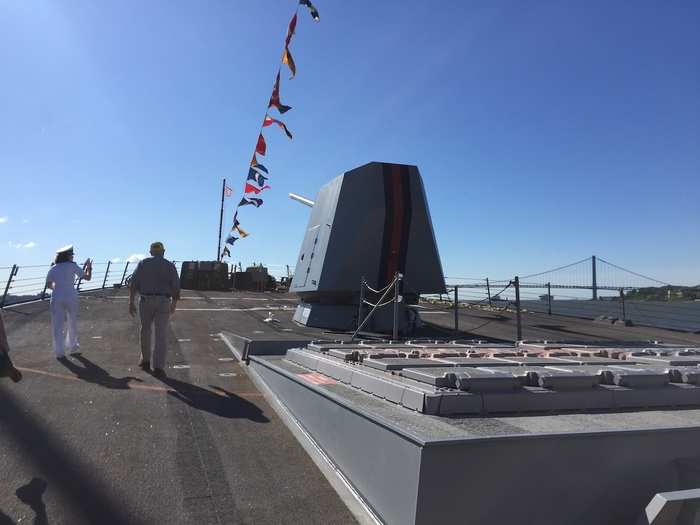
The forward part of the deck has the anchor — a hulking chain strong enough to stop the ship and take your fingers off while it does it.
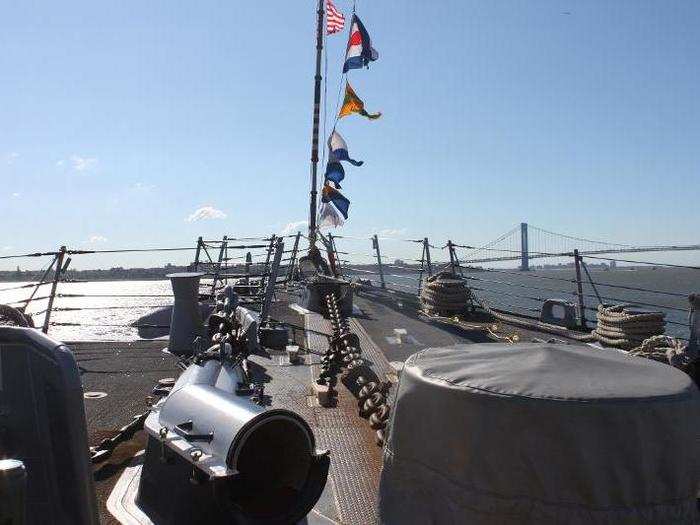
The forecastle sat high and dry while docked in Staten Island, but at sea it's exposed to the elements.
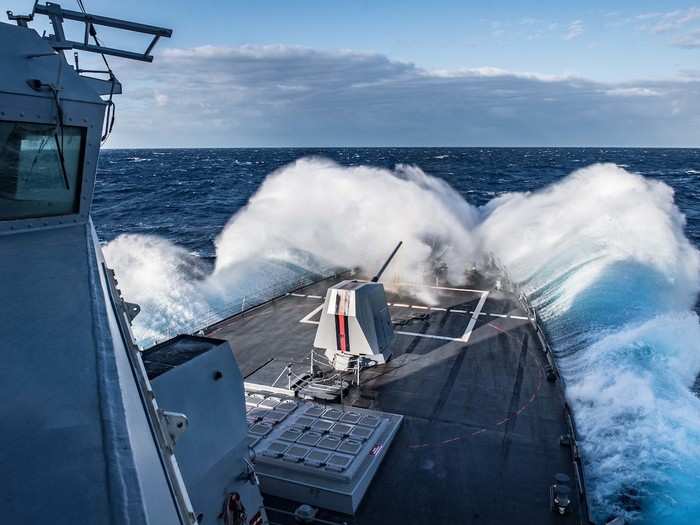
The MK 54 Mod 4 5-inch gun aboard the Dunham has a longer barrel than its predecessor, the Mod 2, improving the Mod 4's effectiveness against land targets, though it can also be used in surface and anti-air roles.
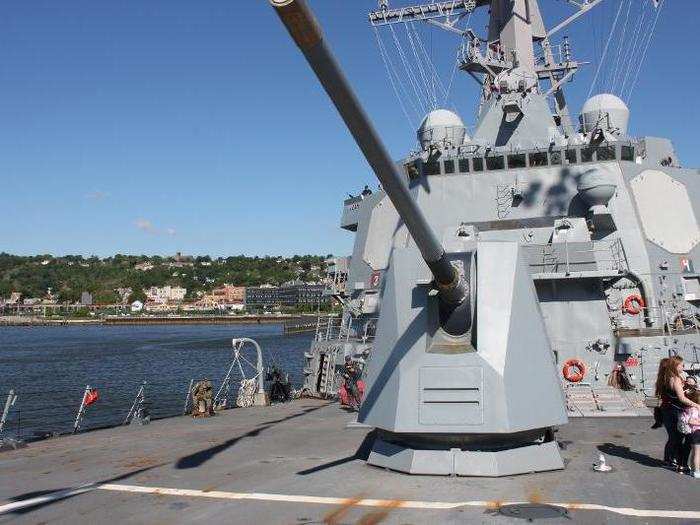
Source: US Navy
The mount, which has an automatic loader drum, is fired remotely, and it can launch 16 to 20 conventional rounds a minute to a range of just under 15 miles. Destroyers can hold up to 600 conventional rounds.
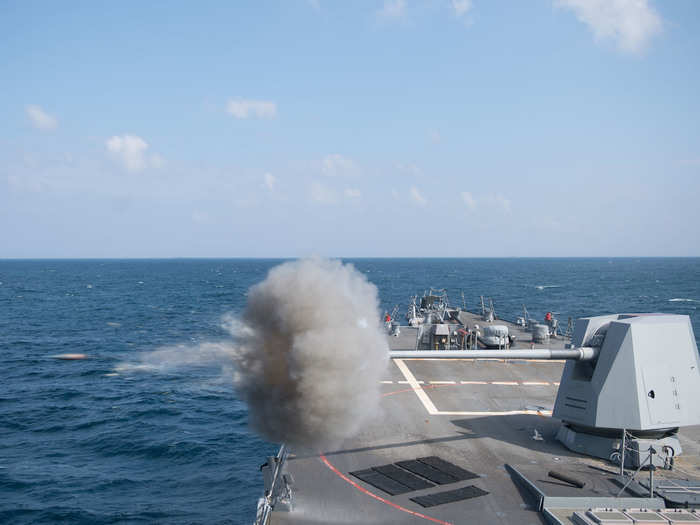
The Dunham also has smaller, but no less effective, weapons, including four .50-caliber machine guns, one of which can be seen below on the forecastle.
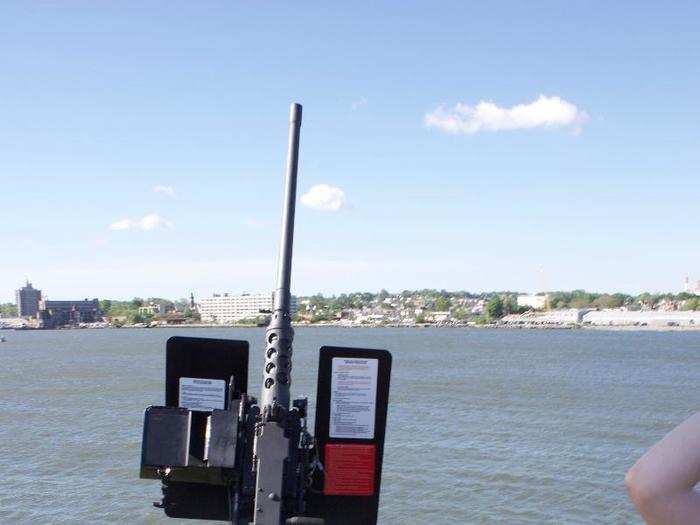
Sailors aboard the Dunham man a .50-caliber machine gun during a gunnery exercise in November 2018.
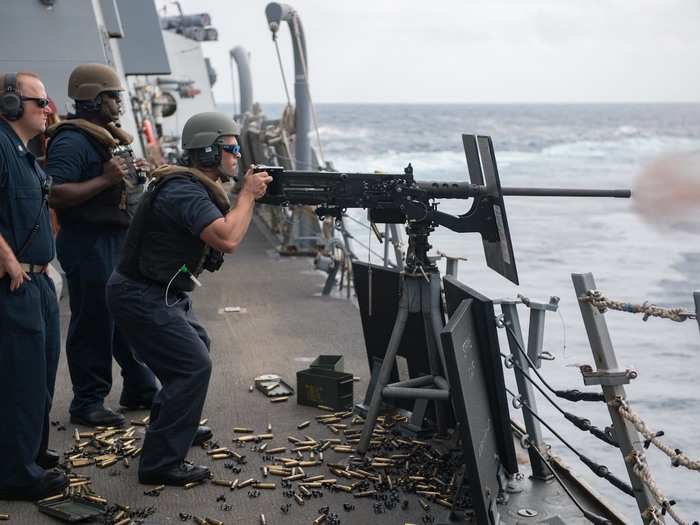
Presiding over the ship's aft is the its Phalanx close-in-weapons system, or CIWS, pronounced "sea-whiz."
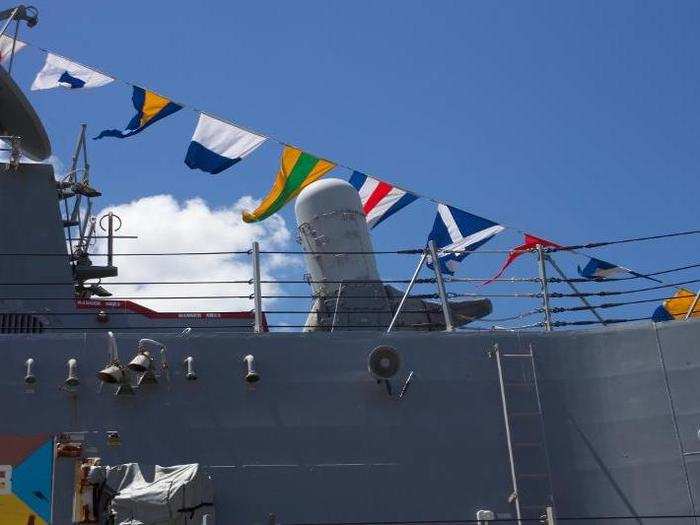
Guided by radar, the CIWS is generally considered the ship's last line of defense against incoming threats. It has a rate of fire of 4,500 rounds a minute.
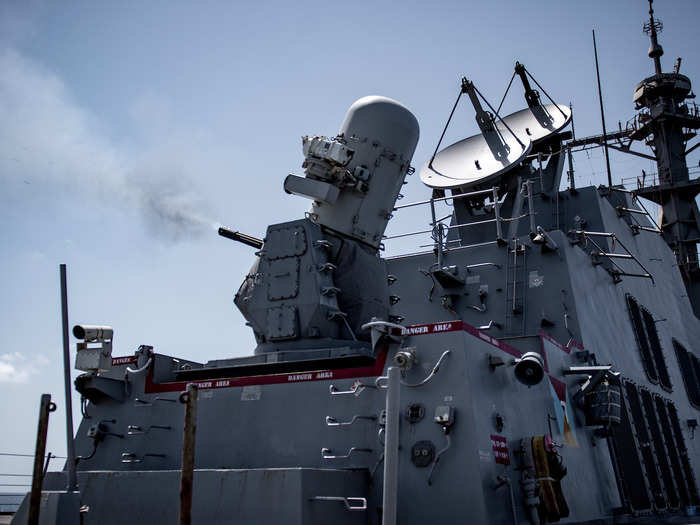
The ship's superstructure, seen here from the forecastle, bristles with masts and antenna, which allow it to navigate and to scan the sea and air around it.
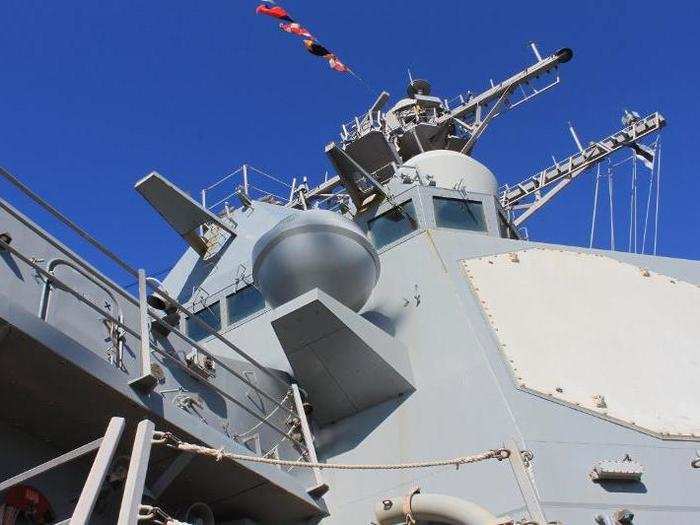
"We have specialists in each field ... and then it culminates in the officers being able to coordinate between them and prioritizing between them," Ellis said of the Dunham's capabilities. "The ship is very multifunctional. I've see us do [helicopter] ops while also doing small-boat ops at the same time, so we are very capable of multitasking with the ... diversity in training. We're able to keep situational awareness on all fronts at the same time."
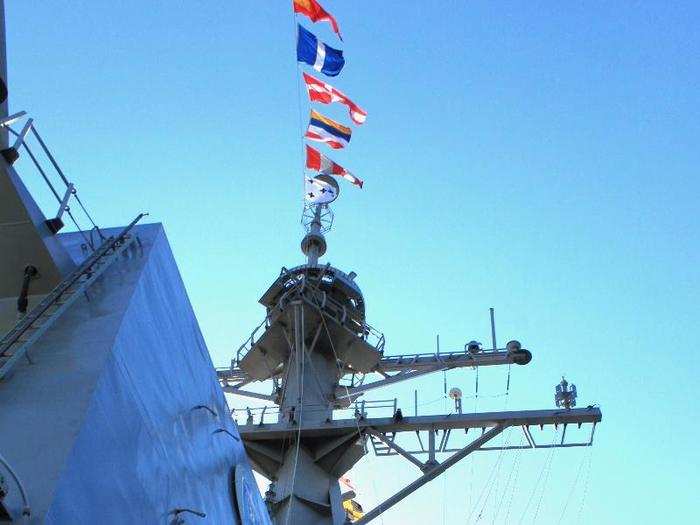
Maneuvering through tight waterways where hostile actors could lurk, like the Bab el-Mandeb or the Strait of Hormuz, requires special vigilance. Antiterrorism officers are sometimes deployed to both sides of the ship to keep an eye on things.
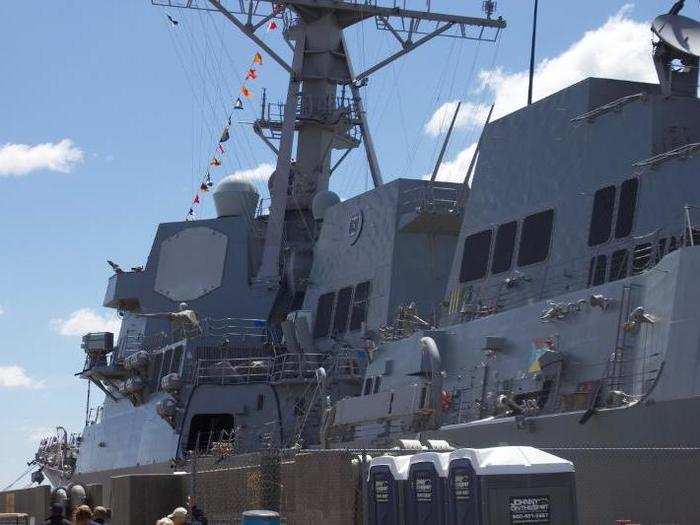
Sitting roughly amidships is one of the ship's most important but overlooked features: A mast used for underway replenishments.
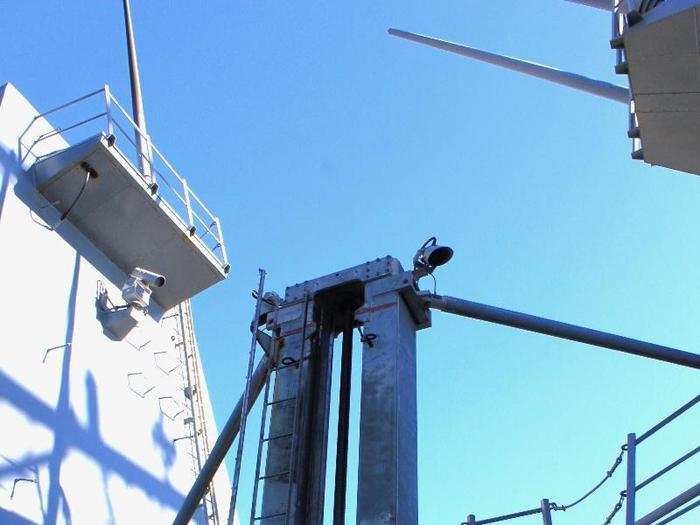
Underway replenishments are one of the most difficult operations the crew does, requiring them to steer within 180 yards to 200 yards of another ship while pallets are slung across the gap, sometimes for two hours. Frequently fuel is also transferred at the same time. During its 2018 deployment, the Dunham "flawlessly executed" 17 underway replenishments and three vertical replenishments, the Navy said.
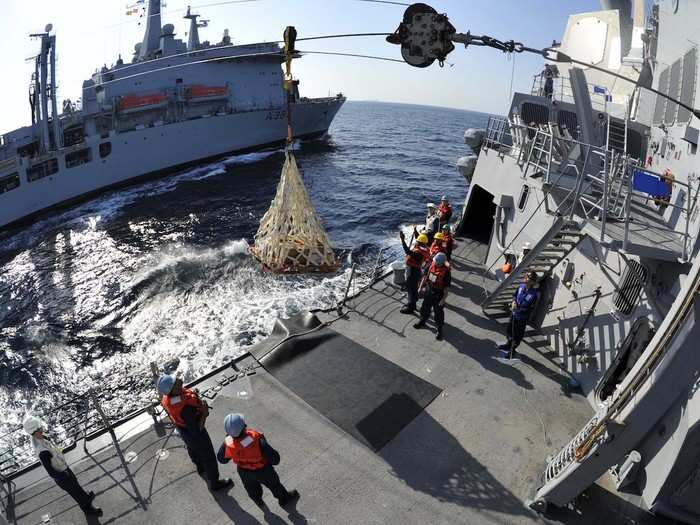
"It requires a lot of focus. There's a lot of distractions. There's a lot of things happening on the bridge at that time, but you have to be super keyed-in to what the ship is doing," said Ellis, who, as one of the Dunham's conning officers, keeps an eye on the ship's movement during replenishments.
Ship-to-ship replenishments and vertical replenishments, which involve helicopters, can be done simultaneously, compounding the complexity. But even just moving stores from one ship to the other requires many eyes and many hands to keep things under control.
"That's why we have so many people up," Ellis said, "so that we can delegate the work out and delegate the responsibility so that the [conning officer] can just focus on this. And there's a lot of oversight. You would usually have a more experienced lieutenant there ... and of course ... for any high-risk evolution [the captain] is going to want to be on the bridge. So lots of oversight, but it is a very high-stress situation."
Aft of the underway replenishment mast was one of the Dunham's small boats, which are often active if the destroyer needs to interact with or board other ships in the area.
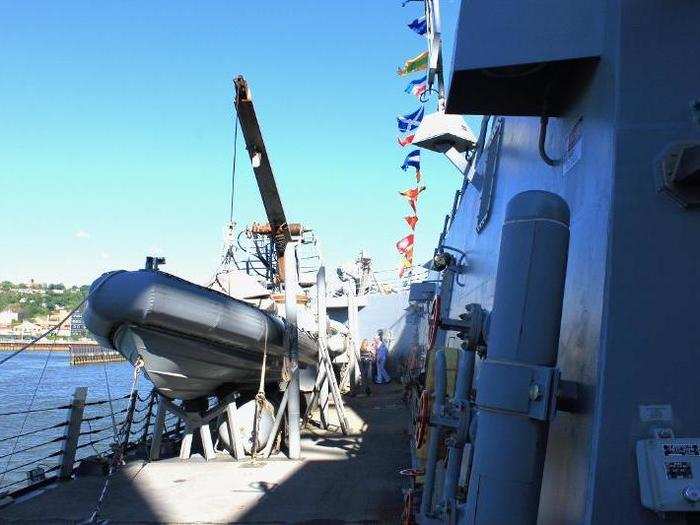
While operating in international waters in the Gulf of Aden in August 2018, the Dunham intercepted a skiff carrying an illicit shipment of more than 2,500 AK-47 rifles.
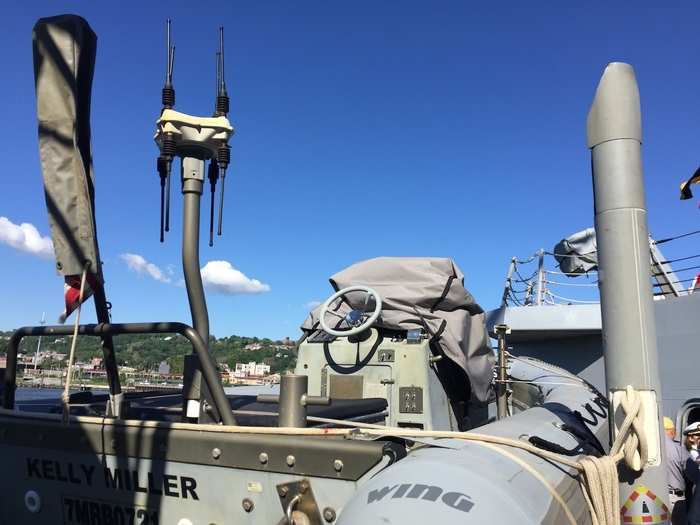
"We get very absorbed in our own world, working so many hours, but it's nice ... when we pull into port and we get a huge, warm welcome like we're getting here at Fleet Week and like we got in Boston for St. Paddy's Day," Ellis said. "We appreciate coming into port and seeing that people care about what we're doing. So [we] just want to say thank you — thank you for the support for everyone out there."

Popular Right Now
Popular Keywords
Advertisement